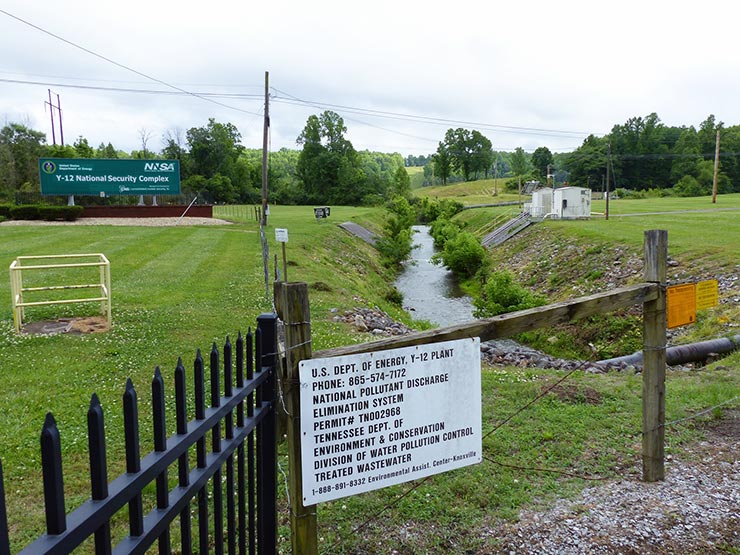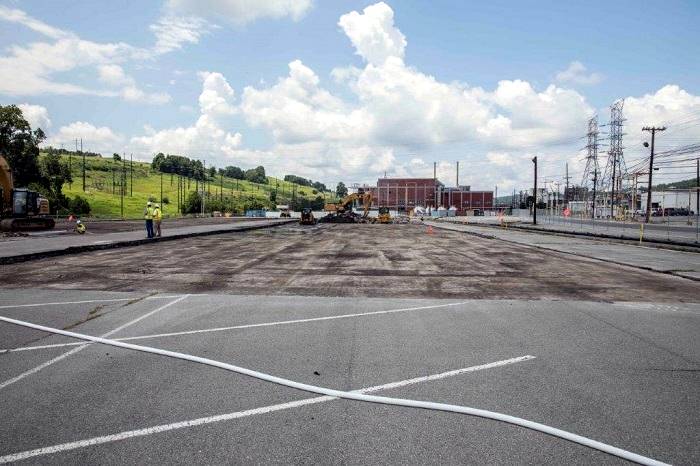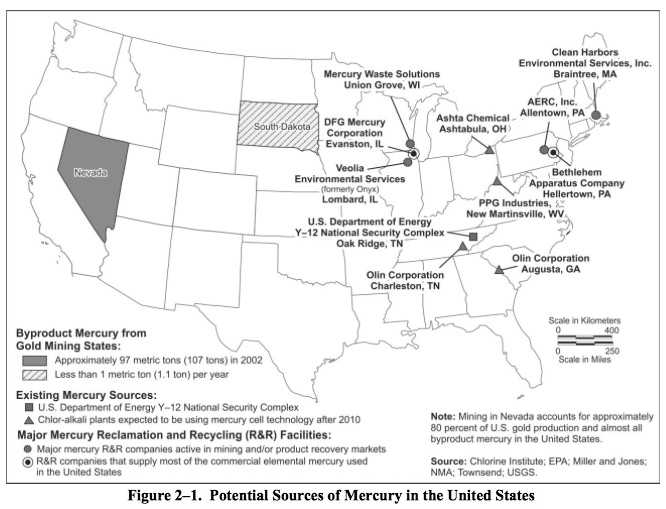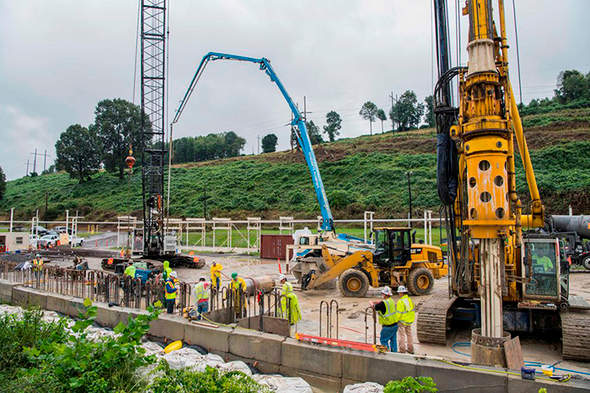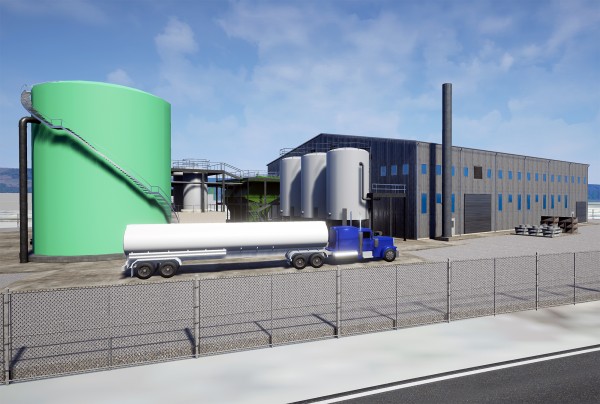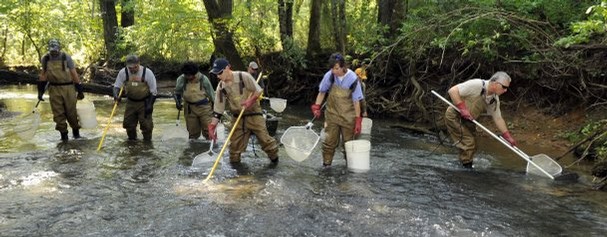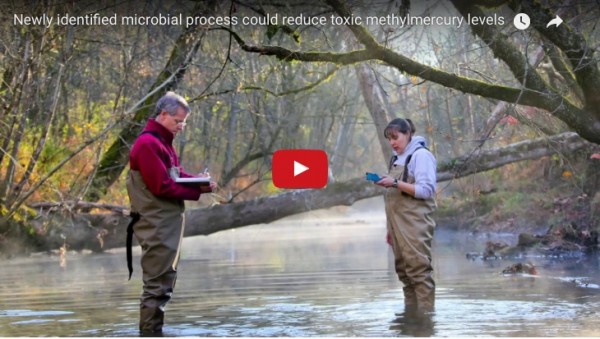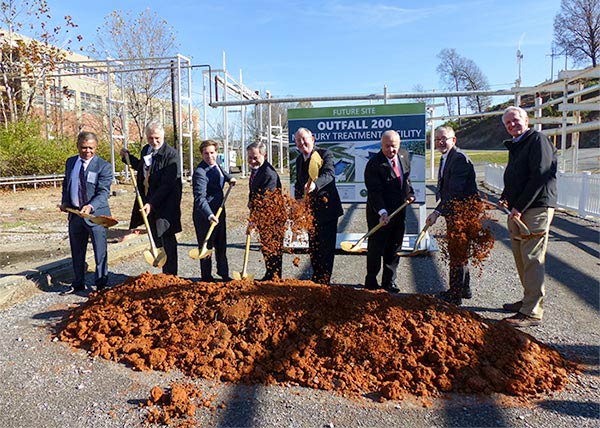
The new Mercury Treatment Facility at the Y-12 National Security Complex will help reduce the amount of mercury that gets into East Fork Poplar Creek and allow the demolition of four large buildings where mercury was used to help make nuclear weapons during the Cold War, officials said during a groundbreaking ceremony on Monday, Nov. 20, 2017. (Photo by John Huotari/Oak Ridge Today)
Note: This story was last updated at 10:45 p.m.
The new Mercury Treatment Facility at the Y-12 National Security Complex will help reduce the amount of mercury that gets into East Fork Poplar Creek and allow the demolition of four large buildings where mercury was used to help make nuclear weapons during the Cold War, officials said Monday.
Mercury contamination is one of the biggest problems remaining from the Cold War, U.S. Senator Lamar Alexander said during a groundbreaking ceremony on Monday morning. Alexander, a Tennessee Republican, first announced the new treatment facility at Y-12 more than four years ago.
“In May 2013, I came to Oak Ridge to announce that a new water treatment facility would be built at Y-12 at the head of the East Fork Poplar Creek to prevent mercury that was once used to make nuclear weapons from getting into our waterways,” Alexander said. “That day, I made a personal commitment to address one of the biggest problems we have from the Cold War era—mercury contamination—and help fund a solution. Today, I am proud to see that we are breaking ground on the new water treatment facility.”
Site preparation for the new Mercury Treatment Facility is expected to start this year, with the rest of construction beginning in late 2018. The facility is expected to start operating in late 2022.
The treatment plant will allow workers to demolish four large buildings where mercury, a toxic metal, was once used: Alpha 2, Alpha 4, Alpha 5, and Beta 4. Work on those buildings, mostly on the west side of Y-12, could start by 2024. [Read more…]

